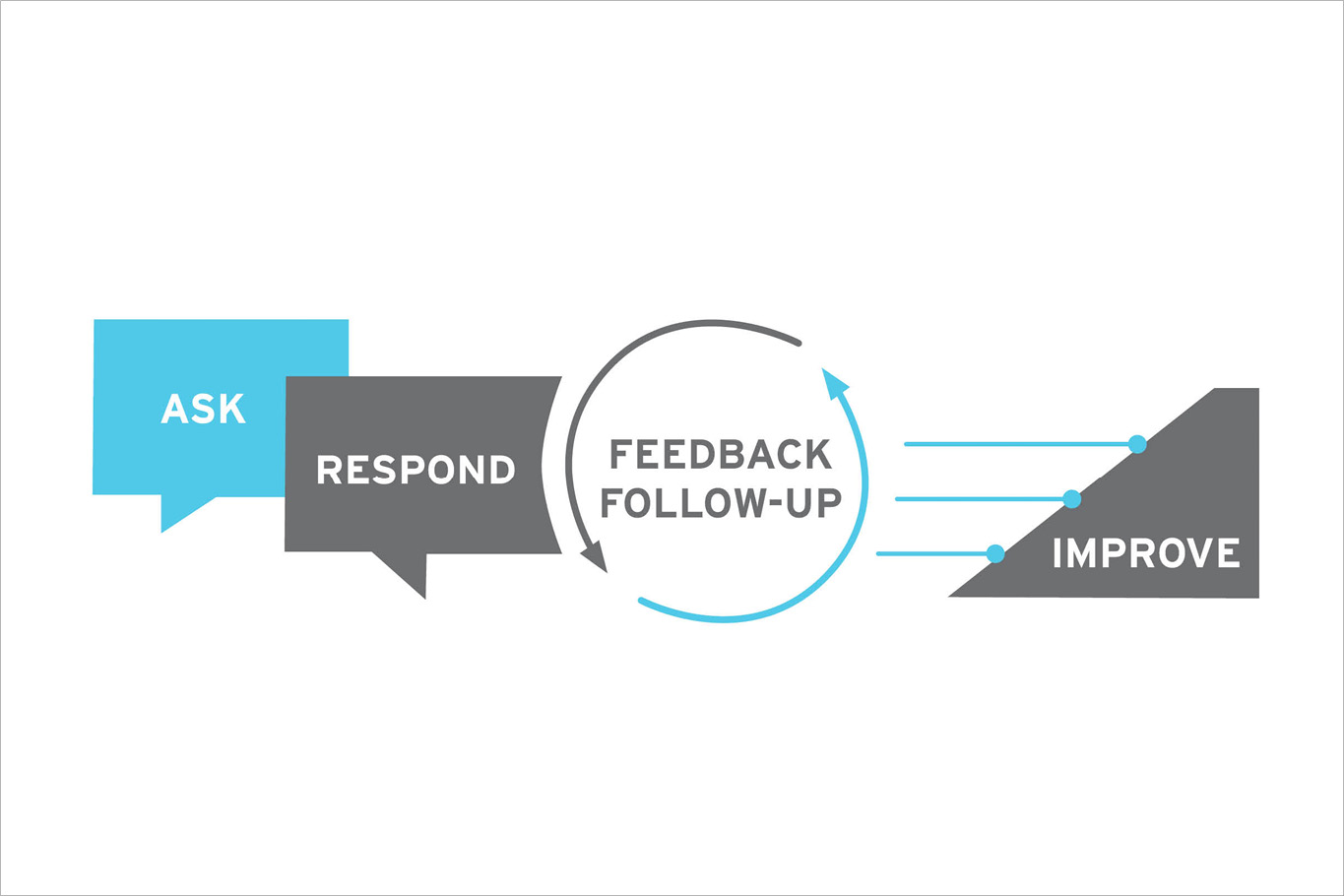The architectural process can be long and complex, and throughout a project’s lifecycle, goals and priorities may shift. That’s why we periodically check in with clients and make sure expectations are aligning with experience.
In 2014, we decided to implement a client listening program. To do this, we started using the Client Feedback Tool, which allows us to request feedback and align expectations at each stage of a project. Feedback requests help us respond to your concerns and adjust our approach in real-time, providing you with the highest level of service.
This article will discuss the benefits of participating in the client listening program by explaining:
- Why we started the program
- How feedback requests work
- How we utilize your feedback
Our goal is to make the architectural process easier for you. By taking a few minutes to respond to the feedback request, you aid the success of your project and experience.
Why We Started the Client Listening Program
We thrive on construction feedback and believe in fostering a self-sustaining culture of critique. In 2014, we began requesting feedback to better understand our level of service. We found that clients addressed their concerns more candidly through feedback requests, helping us notice our blind spots.
Initial feedback was unflattering, but we learned how to respond to clients’ concerns, address our shortfalls, and improve our approach to client interactions. Feedback soon became the heart of our process, and in 2017, we made Client Experience our top strategic priority.
How Feedback Requests Work
Feedback requests track stakeholder expectations throughout a project’s lifecycle. Feedback gathered at the end of a project does little to change outcomes. By asking for feedback at specific intervals, we can adjust our course and realign expectations.
Typically, we request feedback at each design phase—Pre-Design, Schematic, Design Development, Contract Documents, and Contract Administration. Although prompts differ based on the design phase, each request assesses six categories:
- Helpfulness
- Responsiveness
- Quality
- Accuracy
- Budget
- Scope and fees
The final section allows you to provide any additional feedback that the survey questions did not address.
Responding to the Feedback Request
Filling out the feedback request only takes a few minutes. Each question has a sliding scale and a space for comments.
Typically, we send requests to the core group of decision-makers who meet with the design team most frequently. You are also free to send the request to any additional members of your organization or ask your architect to include others.
How We Use Your Feedback
After you submit your feedback, your Project Manager will review the results. They will then discuss the feedback with everyone on your design team, placing Client Experience at the top of everyone’s minds.
Additionally, our Project Managers meet once a month to review feedback from all active projects, helping us improve our process firm-wide.
The feedback you provide does not reward anyone internally. Instead, we use it to make small and large-scale changes. Whether it’s reformatting our invoices or rethinking our approach to project management, client feedback has helped us find ways to make the architectural process easier for everyone involved.
Utilize the Client Listening Program
Countless companies send feedback requests. Most of the time, these requests come at the end of a process or interaction. Although your feedback may help a company improve its service for future customers, it does little to change your experience.
We prefer a different approach. Our goal is to track expectations and make sure we are in alignment throughout your project’s lifecycle. By responding to the feedback request, you help us improve the service we provide to you.
If your Project Manager has sent you a feedback request, take a few minutes to let us know how we are doing. To learn more about our commitment to Client Experience, read about our approach to visioning workshops.
